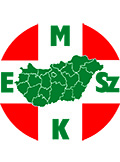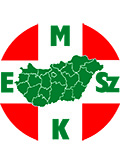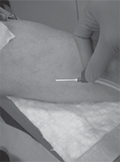The eLitMed.hu medical portal uses computer cookies for convenient operation. Detailed information can be found in the Cookie-policy.
Journal of Nursing Theory and Practice - 2017;30(01)
Content
[Obstructive sleep apnea syndrome: how we screen and diagnose?]
[The obstructive sleep apnea syndrome (OSAS) is known to cause obstructive apneas and hypopneas mostly with desaturations and/or arousals caused by repetitive collapse of the upper airway system during sleep. The disorder negatively affects sleep efficacy and daytime neurocognitive functions as well as increases cardiovascular risks. The typical clinical presentation is excessive daytime sleepiness and loud snoring interrupted by brief pauses of breathing. Its prevalence is 2-4% in the general population. It may be a causative factor in some disorders such as therapy resistant hypertension, nocturnal cardiac arrhythmias, stroke, cognitive decline or depression. Significance of the disorder is highlighted by the fact that its risk must be evaluated by the family doctors during the examination of medical suitability for driving licence in Hungary. ]
[Investigation of nurses eating habits]
[The aim of the study: was to assess the characteristics of diet among nurses in relation to socio-demographic and workplace related factors. Methods: The survey was conducted in 2015 through a self-constructed online questionnaire. Data were analyzed with SPSS 22.0 using chi square, Mann-Whitney and Kruskal-Wallis tests. Results: Sixty percent of the 548 involved nurses are overweight. Monthly overtime correlates negatively with the number of daily meals (p=0.003) with having hot meals (p=0.022) and with the opinion about dietary habits (p=0.001). Calm meals are typical for 30%, eating vegetables, fruits and whole grain bakery products for 20% and only 24.3% drinks two litres per day. Having children has beneficial effects on dietary habits. Conclusions: It can be concluded that the majority of the nurses included are overweight and they have dissatisfactory diet. The reasons for these might be rooted in the characteristics of the job and the Hungarian eating habits.]
[Community nurses’ challenges and occupational health hazards associated with home health care]
[The aim of the study was to assess the occupational health hazards associated with the delivery of home health care among nurses in family practices. Methods: The cross-sectional survey was conducted between 20 January 2016 and 15 April among nurses working in general, child and family practices, selected using a random, sampling method (N=983). The data gathering took place using a web-based, anonymous, self-completion questionnaire. The authors analysed the gathered data with Microsoft Excel 2013 software, employing a descriptive statistical methods. Results: 99,59% of nurses were female with an average of 27,34 years experience. Nurses reported the following frequently health risks at their client’s homes: 71,4% handling sharp devices or equipment, 54,9% contact with human body fluids, 29,51% smoking in home, 13,7% patient handling without slings or handling devices, 8,9% agressive pets, 7,5% neighborhood violence/crime. Conclusions: Results demonstrated an increased biological health risk among nurses. Based on the results, the authors stress the importance of developing and conducting training programs concerning occupational health hazard issues for nurses working in family practices. ]
[Advantages of the bevel down puncture technique]
[The arterio-venous fistula is also called the dialysis patient’s lifeline. The name lifeline stands for the essential connection between the body and the dialysis machine. Keeping it in good condition is very important, because fistulas play a keyrole in the successful dialysis treatment. Fistula care is indispensable both from the nurse and patient side. The dialysis team is responsible for the fistula puncture and care. We introduced the bevel down puncture technique in November of 2011 for better arterio-venous shunt care. Our dialysis nurses were trained on the correct position of the fistula needle. We emphasised the benefits and long-term effects. We use this technique for all patients, except for the first fistula puncture. The bevel down puncture technique reduces the patient’s fear of fistula puncture as it causes less pain. After removal of the needle, the bleeding time decreased from the approximate 6-7 minutes to less than 5 minutes and bleeding volume is also decreased. It also reduces the size of the scab and the aneurysm formation. In our dialysis unit we have had good experiences with the bevel down puncturing technique, as it kept our patients’ fistulas in good condition, this may prolong vascular accesses lifetime.]
1.
Clinical Neuroscience
[Headache registry in Szeged: Experiences regarding to migraine patients]2.
Clinical Neuroscience
[The new target population of stroke awareness campaign: Kindergarten students ]3.
Clinical Neuroscience
Is there any difference in mortality rates of atrial fibrillation detected before or after ischemic stroke?4.
Clinical Neuroscience
Factors influencing the level of stigma in Parkinson’s disease in western Turkey5.
Clinical Neuroscience
[The effects of demographic and clinical factors on the severity of poststroke aphasia]1.
2.
3.
4.
5.








